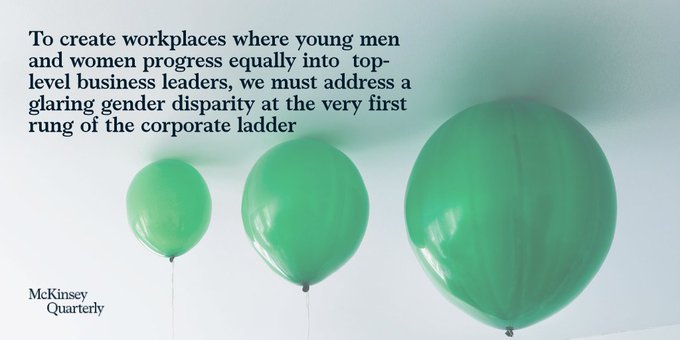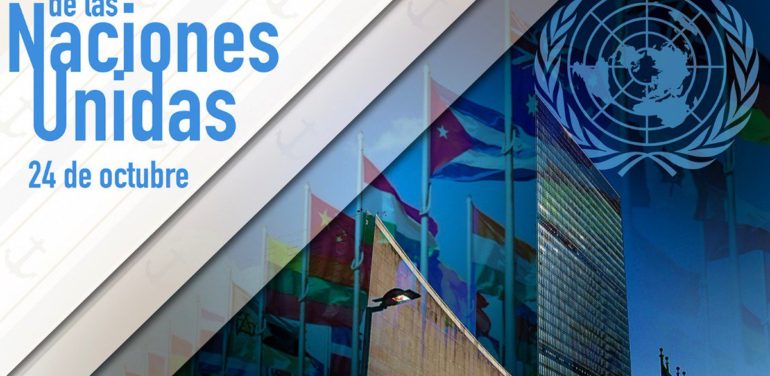To achieve workforce parity, businesses should apply the same practices they are using against the glass ceiling…
Commitment to gender parity at the senior level in companies has been on the rise, and we are starting to see results. The average C-suite has 24 percent more women than in 2015. The share of open roles going to women is rising, through either promotions or hiring.
That progress engenders more progress: C-suite members have an outsize impact on promoting diversity and inclusion in their companies. They also are visible role models to other women coming up the ranks.
Still, we shouldn’t confuse progress with parity. To create workplaces where young men and women progress equally into top-level business leaders, we must address a glaring gender disparity at the very first rung of the corporate ladder. While women account for 48 percent of entry-level hires, they account for just 38 percent of first-level managers, according to the 2019 Women in the Workplace study we at McKinsey developed together with LeanIn.Org
Let that soak in for a moment. That collective stumble on the first step up the corporate ladder suggests that over the next five years, one million women in corporate America will get stuck at the entry level while their male counterparts move into promising career paths. That is equivalent to nearly 25 Major League Baseball stadiums full of women.
It gets worse. The fact that all these women are getting stuck or left behind early in their careers results in today’s unbalanced talent pipeline—women account for just 30 percent of all vice presidents, versus men at 70 percent.
Remedying problems at the beginning of the talent pipeline might be the key to turning incremental gains into explosive ones. At the current pace of change, we will bridge the gap at the first promotion rung in 30 years. If, on the other hand, we start hiring and promoting women into first manager roles at equal rates as men today, we could bridge most of the gap between entry-level and manager roles for women in just five years.
Companies have the tools to make this happen. We know this because they are using them to crack the “glass ceiling,” increasing the percentage of women at the very top. Now it is time to extend those practices to the rest of the organization. Across the companies we work with, three practices stand out.
- Hold managers accountable for increasing gender parity. While only 15 percent of companies do this for early-tenured managers today, some 55 percent hold their top leadership accountable for gender parity. Increased accountability must be accompanied by better support and tools. Managers need clear goals, data visibility on how they are doing, positive incentives, and training on inclusive leadership.
- Deliver on opportunities and fairness. This may sound obvious, but all too often companies fall short. Only 40 percent of employees believe that promotions go to the most deserving candidates. Meaningful correctives such as debiasing performance reviews, leadership succession planning, gender-balanced promotion slates, and formal sponsorship programs should be applied at any company that believes in gender equality. The payoff can be rich; in a fair workplace where opportunities are distributed equally and without bias, men and women are three times as happy and three times as likely to stay.
- Apply the science of ‘nudges’ to your implementation efforts. Making change stick means shifting day-to-day behavior. Nudges are simple prompts on daily actions that create more inclusive working experiences for those around you. Examples for managers include sharing the spotlight, curiously seeking out the opinions of others, or speaking up when you see someone withdrawing from a conversation or being interrupted.
A few years ago, we reported that it would take 100 years to reach gender parity in the workplace. The two of us are researchers and parents—a father of two daughters and a mother of three boys. We want to see parity in the workplace in a few years, when our kids will enter the workforce—not when they retire from it.
To drive toward gender parity at a faster pace, companies must avoid tripping at the first step up. Luckily, most companies have the tools they need. If they apply measures that have been successful at the C-suite to first-manager promotions and hires, they can turbocharge efforts toward workforce parity.
This article originally appeared in the Wall Street Journal under the title “Remedies for early-career gender gap are already in companies’ hands.”






